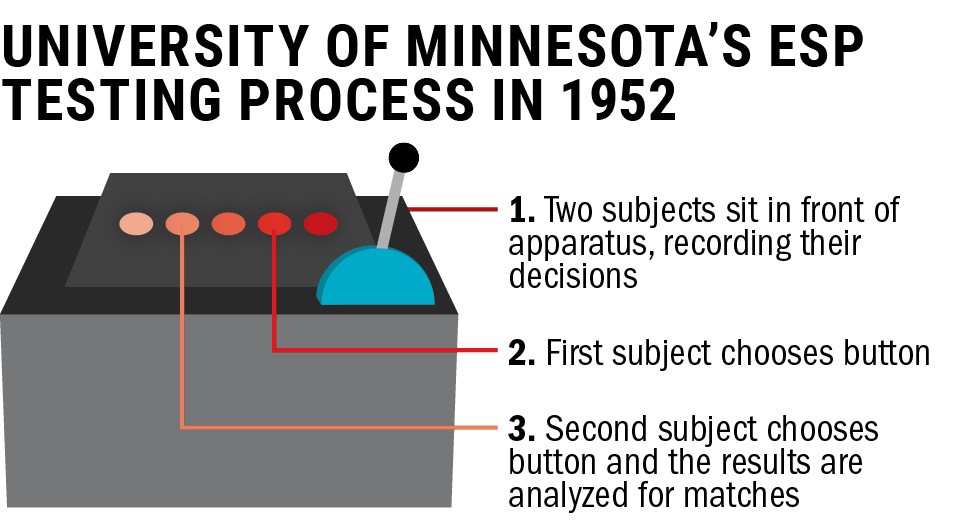Paranormal studies once took place at the University of Minnesota, and though the probability of its merit is low, the research lives on.
University researchers conducted experiments that looked for proof of extra sensory perception (ESP). While the idea fizzled out, it continues at other institutions — like the University of Virginia’s Division of Perceptual Studies, where scientists conduct studies that others disregard.
ESP and paranormal concept experiments operate similarly to other scientific research, with control groups and variables, said Edward Kelly, a researcher of ESP at the University of Virginia.
Only, he said, “[It’s] never a matter of proof, its only accumulating evidence.”
Early ESP experimenters used decks of cards and had subjects guess the signs of the cards. Now, researchers use film clips and pictures, he said. In 1952, University of Minnesota psychologist, Dr. W.T. Heron started conducting ESP experiments where two subjects sat in front of two identical boxes. Each box had five contact points and a lever, according to a Minnesota Daily article.
The “Sender,” or person transmitting the information using ESP, would choose a point and pull the lever. Researchers recorded each movement on strips of perforated tape.
On the other side of the boxes, the second person would try to replicate the action and again, pull the lever. This too was recorded on perforated tape.
Researchers would analyze the results for consistencies in the subjects’ responses, and see how often the two would match.
The chances of getting 15 matches in 25 tries were 10,000 to one, according to the Daily.
University psychology associate professor Colin DeYoung said the issue with psychological research is that defects in the process sometimes give researchers faulty, but desired results.
These flaws, or “tricks”, are in the way the experiment is set up or in the mathematical framework of the concept, he said.
Young said these tricks happen in other scientific fields as well.
An article published in 2011 claimed to prove ESP, Young said, but it was scrutinized and later found to be based on flawed research.
“It takes a lot of guts for young people to go into [parapsychology],” Kelly said.
Now, only a handful of people research parapsychology, Kelly said, because people in the scientific community aren’t willing to look at evidence in support of ESP.
Kelly said there have been successful projects in ESP and other areas over the years. The accumulated evidence is good, considering normal statistical criteria, he said.
Young said although ESP could be possible, “[it] is very unlikely because it would violate everything we understand about the laws of physics and it wouldn’t fit with what we understand about the way the brain works,” he said.








